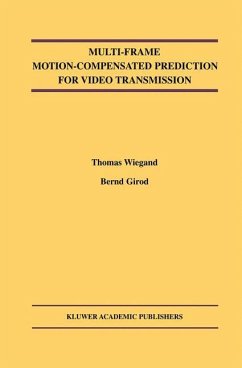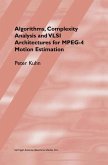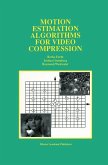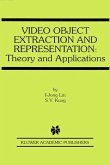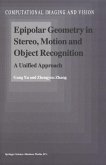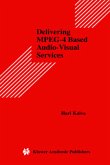Multi-Frame Motion-Compensated Prediction for Video Transmission presents a comprehensive description of a new technique in video coding and transmission. The work presented in the book has had a very strong impact on video coding standards and will be of interest to practicing engineers and researchers as well as academics.
The multi-frame technique and the Lagrangian coder control have been adopted by the ITU-T as an integral part of the well known H.263 standard and are were adopted in the ongoing H.26L project of the ITU-T Video Coding Experts Group.
This work will interest researchers and students in the field of video coding and transmission. Moreover, engineers in the field will also be interested since an integral part of the well known H.263 standard is based on the presented material.
The multi-frame technique and the Lagrangian coder control have been adopted by the ITU-T as an integral part of the well known H.263 standard and are were adopted in the ongoing H.26L project of the ITU-T Video Coding Experts Group.
This work will interest researchers and students in the field of video coding and transmission. Moreover, engineers in the field will also be interested since an integral part of the well known H.263 standard is based on the presented material.
`This body of work by Thomas Wiegand and Bernd Girod has already proved to have an exceptional degree of influence in the video technology community ... As the community has grown to appreciate the long-term memory feature, it has become an embraced part of the conventional wisdom. When the ITU-T launched an initial design for a next-generation `H.26L' video coding algorithm beyond the capabilities of today's standards, Wiegand's long-term memory idea was in it from the very beginning. The tide has turned. What once seemed like the strange and wasteful idea of requiring storage and searching of extra old pictures is becoming the accepted practice - indeed it is the previous practice of throwing away the old decoded pictures that has started to seem wasteful.' From the foreword by Gary J. Sullivan (ITU-T/SG16 & MPEG Video Chairman)
`This body of work by Thomas Wiegand and Bernd Girod has already proved to have an exceptional degree of influence in the video technology community ...
As the community has grown to appreciate the long-term memory feature, it has become an embraced part of the conventional wisdom. When the ITU-T launched an initial design for a next-generation `H.26L' video coding algorithm beyond the capabilities of today's standards, Wiegand's long-term memory idea was in it from the very beginning. The tide has turned. What once seemed like the strange and wasteful idea of requiring storage and searching of extra old pictures is becoming the accepted practice - indeed it is the previous practice of throwing away the old decoded pictures that has started to seem wasteful.'
From the foreword by Gary J. Sullivan (ITU-T/SG16 & MPEG Video Chairman)
As the community has grown to appreciate the long-term memory feature, it has become an embraced part of the conventional wisdom. When the ITU-T launched an initial design for a next-generation `H.26L' video coding algorithm beyond the capabilities of today's standards, Wiegand's long-term memory idea was in it from the very beginning. The tide has turned. What once seemed like the strange and wasteful idea of requiring storage and searching of extra old pictures is becoming the accepted practice - indeed it is the previous practice of throwing away the old decoded pictures that has started to seem wasteful.'
From the foreword by Gary J. Sullivan (ITU-T/SG16 & MPEG Video Chairman)

